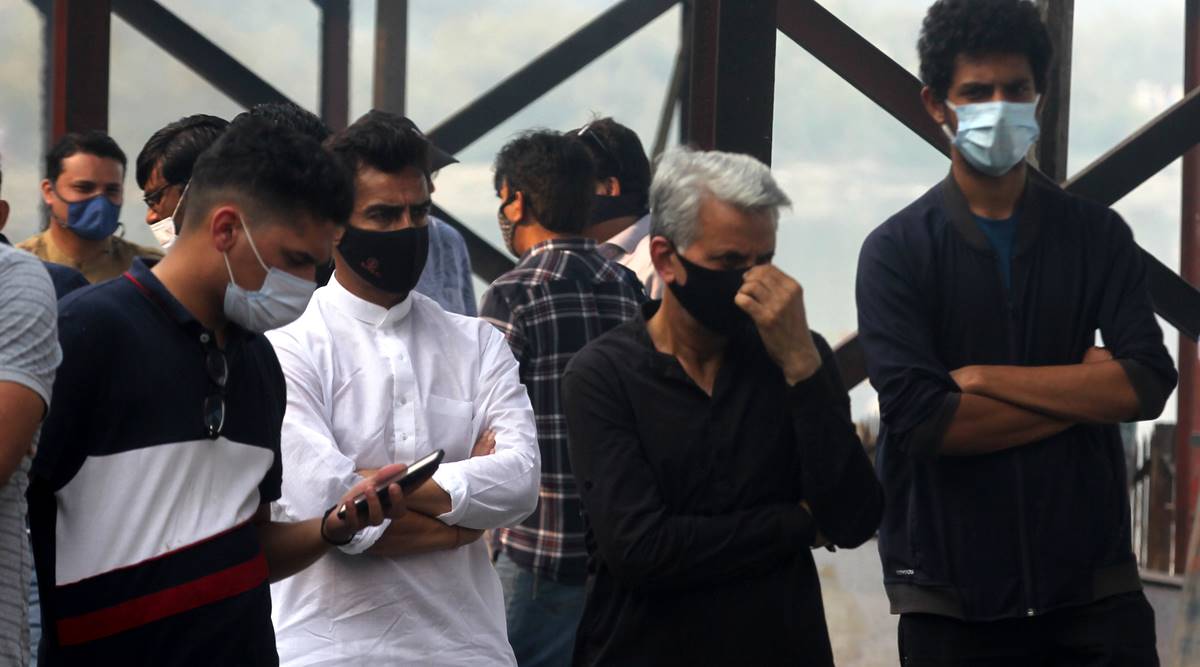
[ad_1]
Saturday afternoon saw several cricketers making their way to the Capital’s Nigambodh Ghat. Ten-year-olds to sixty-somethings, in all whites and coloured jerseys. Pupils of Tarak Sinha, who passed away in the early hours of the day, came to the crematorium for a last glance at their Ustaadji — including the most famous trainee, Shikhar Dhawan, who stood by the funeral pyre for almost two hours.
Delhi’s illustrious Sonnet Cricket Club was merely the outlet; its founder Sinha was the institution. His legacy can be traced through Test line-ups of India spanning generations. Surinder Khanna, Randhir Singh, Raman Lamba, Manoj Prabhakar, Sanjeev Sharma, Ajay Sharma, Atul Wassan, Aakash Chopra, Anjum Chopra, Ashish Nehra, Dhawan and Rishabh Pant.
Members of the Sonnet stable were present, but there was little catching up to do. Isolated attempts to discuss the T20 World Cup fizzled quickly. The latest batch of trainees — who were informed when they turned up for practice in the morning — sat solemnly by the banks of the Yamuna.
When there was a conversation, it inevitably started with or moved on to a mention of Sinha’s ‘paarkhi nazar’: The eye for talent that forecasted breakthroughs.
 Family members and cricket club students at the Nigambodh Ghat. (Express Photo By Amit Mehra)
Family members and cricket club students at the Nigambodh Ghat. (Express Photo By Amit Mehra)
Snubbed at the state selection of the 1969 CK Nayudu tournament, the story goes, a 20-year-old Sinha set up the club named after a form of short poems revived by William Shakespeare. It became a platform to nurture and aid financially-underprivileged kids; from providing equipment to school fees.
Devender Sharma, who came to Sinha as an under-13 wicketkeeper-batsman with no money to buy a bat or gloves, had been with him for 34 years.
“He got us shoes. He got us clothes. When Ashish Nehra was selected for Tests in Sri Lanka (in 1999), sir bought the shoes for him,” says Devender, a long-time assistant coach at Sonnet Club who was by Sinha’s side during the 71-year-old’s battle with lung cancer. “He was the father figure to all of us.”
Perseverance and adaptation
Through breaking voices and tears streaming down their faces, Sinha’s students shared stories of how the coach shaped their dreams. Ajay recalls the several trips Sinha made to his father’s shop to persuade him to let him play. Wassan was a disinterested 15-year-old when Sinha dropped in to change his mind.
And of the sport too.
“If Rishabh Pant came to our club in the 80s, he would have been thrown out. But sir knew how cricket changed, and changed himself with it,” says Wassan, who played four Tests. “He wasn’t a hardcore purist. He adapted and encouraged innovation.”
 Rishabh Pant has been Tarak Sinha’s most-recent ward. (FILE)
Rishabh Pant has been Tarak Sinha’s most-recent ward. (FILE)
“Sir always said that a batsman who plays at number 5 or 6, is the life of the team,” Ajay says. “The rule was that if you could finish a match from that position, then only are you a good player. For players like myself and Raman Lamba, who wanted to practise multiple times a day, he was always available.
“I had been struggling during the 1985-86 Ranji Trophy season. He asked me to go home and shadow-practise for hours at end before the final. That simple thing put everything in place. I scored a hundred against Kapil Dev’s Haryana (leading Delhi to the title),” he adds.
The key to Sinha’s five decades of success was customisation and calibration.
“Selection was always through a trial. And sir could spot a kid by the way they carried themselves,” says Devender.
Compliments were rare, angry outbursts rarer.
“He was strict, but very rarely got angry. When he got angry, he would bite on his handkerchief. Rumaal chaba jaate the, so we would know. ab bacho (be wary),” Wassan laughs. “A couple of kids also got slapped. But it was tough love. His passing shouldn’t be termed as a loss for Delhi cricket. It’s a loss for cricket.”
After all, Sinha’s life was more than a sonnet. It was a full-fledged ode to the game.
[ad_2]
Source link